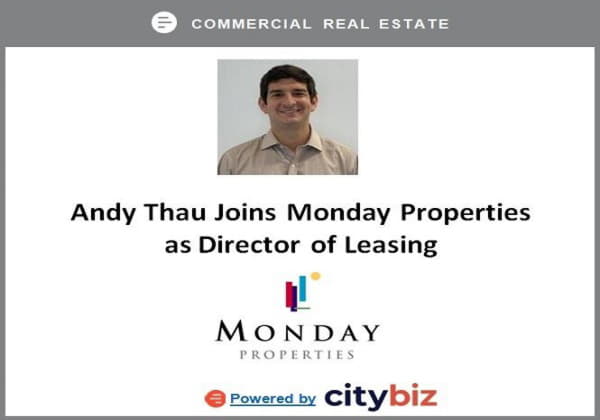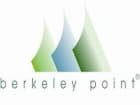Rapid change is underway in the world’s commercial real estate industry, and the dynamics are in flux as the current investment cycle enters its latter stage. The industry continues to contend with differing property fundamentals across asset types, markets and regions, with occupier behaviour, innovation and technology acting as key sources of change that are taxing the sector. The current interest-rate environment is another contributor to this change – albeit a somewhat limited factor.
These are some of the key trends noted in Avison Young’s2018North Americaand Europe Commercial Real Estate Forecast, released today.
The annual report covers the office, retail, industrial and investment sectors in 67markets in six countries on two continents: Calgary, Edmonton, Halifax, Lethbridge, Montreal, Ottawa,Regina, Toronto, Vancouver, Waterloo Region, Winnipeg, Atlanta, Austin, Boston, Charleston, Charlotte, Chicago, Cleveland, Columbus, OH;Dallas, Denver, Detroit, Fairfield County, Fort Lauderdale, Greenville, Hartford, Houston, Indianapolis,Jacksonville,Las Vegas,Long Island,Los Angeles,Memphis,Miami, Minneapolis, Nashville, New Jersey, New York, Oakland, Orange County, Orlando, Philadelphia,Phoenix,Pittsburgh, Raleigh-Durham, Reno, Sacramento, San Antonio, San Diego, San Francisco,San Jose/Silicon Valley,San Mateo,St. Louis, Tampa, Washington, DC;West Palm Beach,Westchester County,Mexico City, Coventry,London, U.K.;Manchester, Berlin, Duesseldorf, Frankfurt,Hamburg,Munichand Bucharest.
“We have spent the better part of three years debating where we are in the real estate cycle; for 2017, we dragged out a baseball analogy, pondering what inning we were in,” comments Mark E. Rose, Chair and CEO of Avison Young. “We concluded that the real estate industry was in the late stages of the game, but could be headed into extra innings. As we start 2018, the game is still going, but there is a clear and palpable difference. Change is underway and the dynamics on the field are in flux. Our industry needs to decide what to do next.”
Rose continues: “As we greet the New Year, however, a critical difference is that change is in motion – change that is positive, powerful and moving very quickly. This is the type of change that creates opportunity and allows for success. Those who cannot accept this new reality will dismiss it at their own peril.”
He adds: “Interest rates are at historic lows and continue to stay low, but are moving up incrementally, as they really only have one way to go. Short-term interest rates are being properly – and effectively – normalized by central banks. There is stability and growth in the GDP of the G7, and rising interest rates are typical in this environment. Capitalization rates are another story. Commercial real estate has printed trades at historically low cap rates, but the bid-ask spread is widening – and acting as a brake on transaction volumes in major markets. The theory that interest rates will rise at the short end, but thinning spreads will keep cap rates in place, is not logical or supportable over the mid-to-long term. Cap rates and corresponding return requirements will eventually move as financing acquisitions becomes more expensive.”
Occupier behaviour, states the report, is another source of change that is challenging the market andmore fundamentally driving innovation and performance.
“Ultimately, these trends will prove beneficial as real estate is used more effectively and with greater cost efficiency,” says Rose.
Technology, including its impact on real estate solutions, is potentially the most exciting element of change in the commercial real estate industry. Technology adoption– including artificial intelligence–is gaining so much momentum that it is driving profitability and expanding capabilities exponentially.
Wellness in the workplace is another emerging trend that intersects with occupancy solutions, the hunt for talent and technology. Whole health,or the combination of physical and mental wellness, is critical to the success of all enterprises.
Rose concludes: “Change is good when it benefits an industry and its stakeholders. Rising interest rates and capitalization rates in 2018 – and beyond – will allow for more traditional pricing of assets based on a risk-adjusted real rate of return. Once the stalemate over prior cycle strategies and underwriting ends, growth should fuel more demand, reduce vacancies and cause rental rates to rise. When this change is combined with efficiencies captured by the latest technologies, we will welcome a new wave of demand, performance and innovation.”
CANADA
Canada’s commercial real estate sector continues to possess varying, but largely healthy, property market fundamentals across the country’s regions and asset classes – supported by a stable economy, which is the envy of the G7 countries.
“Despite the favourable market conditions, there is a sense that we are late in the cycle and a slowdown is inevitable,” comments Bill Argeropoulos, Principal, Practice Leader, Research (Canada) for Avison Young. “The commercial real estate sector ishaving to re-evaluate challenges and opportunities in a technologically transforming world – a world that Canada appears to be making a concerted effort to lead, rather than follow.”
Argeropoulos notes: “Office leasing fundamentals are reasonably sound, and even the challenged markets in Calgary and Edmonton are showing promise. Across the board, demand from traditional sectors is now augmented by growth in the tech sector and the increasingly prominent co-working movement, which is taking a larger share of the leasing pie.”
“Co-working’s rapid growth is attributed to the needs of startups and entrepreneurs, and rising demand for affordable workplaces on flexible lease terms. This growth has the potential to disrupt the office market with new pricing models for office leases and asset valuations. Clearly, building owners will weigh whether this disruption is a benefit or a detriment to their assets,” he says.
Notable Canadian office market highlights include:
- With a market comprising more than 530 million square feet (msf), Canada’s overall office vacancy rate increased 20 basis points (bps) from year-end 2016 to11.8% near year-end 2017. The increase can beattributed to ongoing supply-demand imbalances. Vacancy was higher in five of 11 markets surveyed; four remained in single-digits, while five were below the national average. Calgary posted the highest vacancy rate (23.1%);Winnipeg the lowest (6.6%), and Waterloo Region the biggest change (+500 bps to 16.6%).
- Uneven demand and a healthy development pipeline will see vacancy rise by varying degrees in five of 11 markets and lift Canada’s overall office vacancy rate 40 bps to 12.2% by year-end 2018. Weighed down by Calgary and Edmonton’s struggles, a notable West-East divide remains. Western markets will finish 2018 with a collective vacancy rate of 16.1% versus 10.1% in Eastern markets. Four Canadian markets are projected to be among the 10 lowest overall office vacancy rates in North America by year-end 2018: Winnipeg, Toronto, Regina and Vancouver.
- Taking a long-term point of view and unfazed by supply-demand imbalances, the development community remains busy. There was 12.5 msf (48% preleased) of office space under construction across Canada near the close of 2017–mirroring construction levels at year-end 2016.More than half of the development pipeline isconcentrated in the nation’s biggest market, Toronto. This status ranks the city sixth among North America’s most active development markets.
Argeropoulos continues: “On the retail front, the one constant is change, and 2018 will be no different. Strengths in the sector – high consumer confidence, tight vacancy and balanced new supply, along with growth in population, immigration and tourism – are countered by weaknesses, such as rising consumer debt and vacancy from failing big-box and department store retailers.
“Contrary to widespread belief, bricks-and-mortar retail is not going away, but is in the process of transforming and adapting to serve customers in the wake of technological advancement. E-commerce is growing faster than in-store sales, but still represents a small fraction of all retail sales in Canada.
“In this world of constant change, the most successful retailers and owners will focus on the synergy between clicks and bricks to grow their brands and maximize profits,” adds Argeropoulos.
The report states that single-digit vacancy rates define the rapidly evolving Canadian industrialsector with vacancy levels that are half of those in the office markets. A diverse and growing tenant base, fuelled by accelerating e-commerce demand, is pushing the sector to adapt quickly as some markets face a decreasing supply of developable land.
Argeropoulos goes on to say: “While the industry has been focusing on fulfilling consumers’ infatuation with faster last-mile delivery of goods to where they live or work, stakeholders will also have to prepare for the sheer volume of inevitable merchandise returns, which may require a different type of facility to process.”
Notable Canadian industrial market highlights include:
- Canada’s 2-billion-square-foot-plus industrial market displayed an overall vacancy rate of 3.9% as 2017 came to a close– down 50 bps from year-end 2016. Despite a steady stream of development, demand will remain strong during the next 12 months, holding the nation’s industrial vacancy rate below 4% in 2018. With the exception of Halifax, single-digit vacancy rates are the norm, with six of the 11 markets surveyed at or below the Canadian average.
- Vancouver claimed the nation’s lowest vacancy rate (1.6%) and second-lowest among North American industrial markets in 2017.Though it is expected to improve in 2018, Halifax vacancy was the highest and also posted the greatest year-over-year change (+280 bps to 15%) in late 2017. Comprising 70% of Canada’s industrial stock, Eastern markets registered a 60-bps decline in vacancy to 3.5%near year-end 2017 from year-end 2016– a rate that is expected to be repeated again by year-end 2018. With a modest increase in 2017 and sitting 150 bps higher at 5%, Western markets are projected to see vacancy retreat marginally in 2018.
- In the North American context, Canadian markets were standouts. Vancouver, Toronto, Winnipeg and Ottawa claimed four of the 10 lowest vacancy rates in 2017. Joining these markets in 2018 will be the Waterloo Region.
- Fuelled largely by e-commerce and the need for the latest in logistics/distribution/warehouse facilities,more than 11.5 msf (41% preleased) was under construction near the close of 2017 (representing only 0.6% of the total industrial stock). This total compares with nearly 12 msf that was underway in 2016.Vancouver and Torontoremain magnets for newindustrial development, accounting for 73% of total development. However, Vancouver (5 msf) surpassed Toronto (3.4 msf) as the most active development market.
The report also states thatthe amount of investment capital being deployed into Canadian commercial real estate has not abated and, although the market is constrained by a lack of product and the lateness of the investment cycle, eager investors are seeking new ways to direct more capital into hard assets – despite rising interest rates on the horizon.
Argeropoulos adds: “It was another record year in 2017 for investment with an estimated $32 billion worth of property changing hands in Canada’s major markets and asset classes through mid-December – well above the record $28 billion in sales in 2016. Investors continue to diversify portfolios, prune non-core assets and pursue prime assets in key markets.”
Investment capital gravitated to the country’s hottest markets – Vancouver and Toronto – and their prized assets in 2017. The traded assets included: the $1.9-billion (50% interest) office/retail portfolio (between Cadillac Fairview and partners Ontario Pension Board and Workplace Safety and Insurance Board) in Vancouver; Oakridge Centre in Vancouver for $961 million (between Ivanhoé Cambridge and QuadReal);the sale of a 50% interest in Toronto’s Scotia Plaza for $682 million (between Dream Office REIT and AIMCo/KingSett) and 700University Avenuefor $433 million (between Ontario Power Generation and KingSett).
Canada’s other major cities also saw their fair share of investment activity, including the sale of a 50% interest inTransCanada Tower in Calgary for $257 million, Edgewater on Jasper in Edmonton for $191 million, Constitution Square in Ottawa for $481 million, and SNC-Lavalin’s headquarters in Montreal for $173 million.
Potential assets anticipated to trade in 2018 include: the Hudson’s Bay Company’s 636,000-sf Vancouver flagship store; the 2.2-msf Bay-Adelaide Centre office complex in Toronto; Cominar REIT’s portfolio of non-core assets outside of Quebec and Ottawa comprising 6.2 msf, which is expected to close at the end of March 2018, and to be followed by another round of dispositions involving some core assets by year-end 2018; and in Edmonton, the ICE District office towers (Edmonton Tower and Stantec Tower), totaling 1.3 msf of mixed-use space.
U.S.
“U.S. commercial property markets demonstrated further strength in terms of vacancy and pricing in 2017 and the recent tax reform legislation could have a positive impact on real estate and investors in 2018,in spite of the often-divisive issues facing the country,” comments Earl Webb, President, U.S. Operations for Avison Young. “While overall sales transaction volume fell for the second year in a row, domestic and foreign investors continue to view the U.S. as a safe haven with specific markets and property sectors registering gains.And as we forecasted at the beginning of 2017, an equilibrium was achieved between new supply of space delivered and overall incremental demand for space by occupiers. With modest interest-rate increases readily absorbed by both the debt and equity markets, cap-rate compression largely ceased during the year.”
Webb continues: “An abundance of capital remains available for trades, pricing is strong and property markets are registering meaningful development in response to demand for modern properties. These factors will keep the U.S. commercial property market on its current upward trajectory through 2018.”
Webb adds: “Likewise, trends seen in 2017 for the office sector are expected to continue in 2018. Aging inventory and tenant demands for on-site amenities will bring further renovation and reuse of older and obsolete properties. Theseare often repurposed to alternative property types – we’ve seen office become residential, storage and even conversions to schools. Owners are setting aside under-utilized spaces, portions of lobbies and other common areas for tenant amenities, such as shared conference centers and gathering spaces. As well, landlords are building ready-to-occupy spec suites to attract smaller tenants, and are often directly competing with the expanding number of new co-working operators. From an occupier standpoint, the new lease accounting standard is one year away from taking effect and will, undoubtedly, cause occupiers to study the costs and benefits of leasing versus ownership seriously.”
Notable U.S. office market highlights include:
- Avison Young is tracking 5.2 billion square feet (bsf) of office inventory in 46 U.S. markets that had an overall vacancy rate of 11.8% at the end of 2017, mirroring office vacancy in Canada, and falling 10 bps from year-end 2016’s 11.9% rate.U.S. vacancy is forecasted to increase slightly to 12% by year-end 2018.
- San Francisco is forecasted to be the tightest U.S. office market in 2018 with a 5.8% vacancy rate, a repeat of the market’s 2017 performance.
- The five largest office markets (New York, Philadelphia, Washington, DC, Chicago and Dallas) are all forecasting vacancy to rise, to a minor degree, by year-end 2018.
- There was 103 msf under construction in the U.S. at year-end 2017 with the following five markets accounting for roughly half of that total: New York (15.3 msf); Washington, DC (11.6 msf); Dallas (8.7 msf); San Jose/Silicon Valley (7.8 msf) and San Francisco (6 msf).
- Office space under construction is 55% preleased with tenants demonstrating demand for new well-located and amenity-rich product.
The report goes on to say the rate of growth in e-commerce outpaced that of overall retail sales, and analytics will play a greater role as retailers embark on targeted and automated marketing campaigns. The need for omni-channel retailing has not abated, and successful retailers’ offerings include experiential retail and strong digital storefronts with speedy delivery.
Notable U.S. industrial market highlights include:
- As 2017 drew to a close, the U.S. industrial sector totaled 11.2 bsf and reported an overall vacancy rate of 5.2 % – a 10-bps dip from year-end 2016. Another 188 msf of new construction is underway.
- Four U.S. markets dominate industrial development in North America. Dallas ranks first inthe country with more than 21.5 msf under construction (37% preleased), followed by Philadelphia with 17.7 msf (36.1% preleased), Atlanta with 16.5 msf (17% preleased) and New Jersey with 14.3 msf underway (54.6% preleased).
- U.S. industrial vacancy is expected to rise slightly to approximately 5.4% at the end of 2018 while 19 markets are forecasting vacancy to fall year-over-year.
Supported by a period of historically low interest rates, investment sales volume rose each year between 2009 and 2015. In 2015, total volume nearly reached the 2007 peak of $572 billion on the back of a slate of megadeals and portfolio sales. After falling by 9% year-over-year in 2016, transaction volume in 2017 trended still lower through November 2017. Nevertheless, pricing was supported and an abundance of capital chased available deals. Select U.S. markets also reported significant, or historic, sale prices. Specific asset classes and key markets are performing well and this trend is expected to be amplified in 2018.
“There is no question about the global appetite for industrial investments,” says John Kevill, Principal and Managing Director of U.S. Capital Markets for Avison Young. “With attractive financing options persisting and new tax legislation taking effect, capital markets should maintain their strength in 2018 – with even more real estate exposure possible from private investors. Of course, markets thrive on clarity; and with several macroeconomic shifts underway across all product classes, we expect that demand will continue to be strongest for well-established properties and institutional-quality offerings.”
After China led foreign investment in the U.S. in 2016, Canada reclaimed top spot, by far, with more than $15 billion invested at year-end 2017. Including Singapore, China, the Netherlands and Germany, the top five countries accounted for $34 billion in cross-border capital investment in the U.S. in 2017.
“We expect several factors to influence real estate occupancy and capital-markets activity in 2018,” adds Webb. “Real estate will provide attractive yields relative to stock-and-bond alternatives as the growth rate of the stock market should slow from that of 2017.”
He concludes: “Essentially, we expect rental stability to prevail in most markets. Although transaction volume will decline again, by as much as 10% to 15% in major markets, pricing should be buoyed by capital demands from all investors, thus offsetting any slight increases in borrowing costs.”
Avison Young is the world’s fastest-growing commercial real estate services firm. Headquartered in Toronto, Canada, Avison Young is a collaborative, global firm owned and operated by its principals. Founded in 1978, the company comprises 2,600 real estate professionals in 82 offices, providing value-added, client-centric investment sales, leasing, advisory, management, financing and mortgage placement services to owners and occupiers of office, retail, industrial, multi-family and hospitality properties. www.avisonyoung.com
Avison Young was a winner of Canada's Best Managed Companies program in 2011 and requalified in 2017 to maintain its status as a Best Managed Gold Standard company
Follow Avison Young on Twitter:
For industry news, press releases and market reports: www.twitter.com/avisonyoung
For Avison Young listings and deals: www.twitter.com/AYListingsDeals
Follow Avison Young Bloggers:http://blog.avisonyoung.com
Follow Avison Young on LinkedIn:www.linkedin.com/company/avison-young-commercial-real-estate
Follow Avison Young on YouTube: www.youtube.com/user/AvisonYoungRE
Follow Avison Young on Instagram: www.instagram.com/avison_young_global















